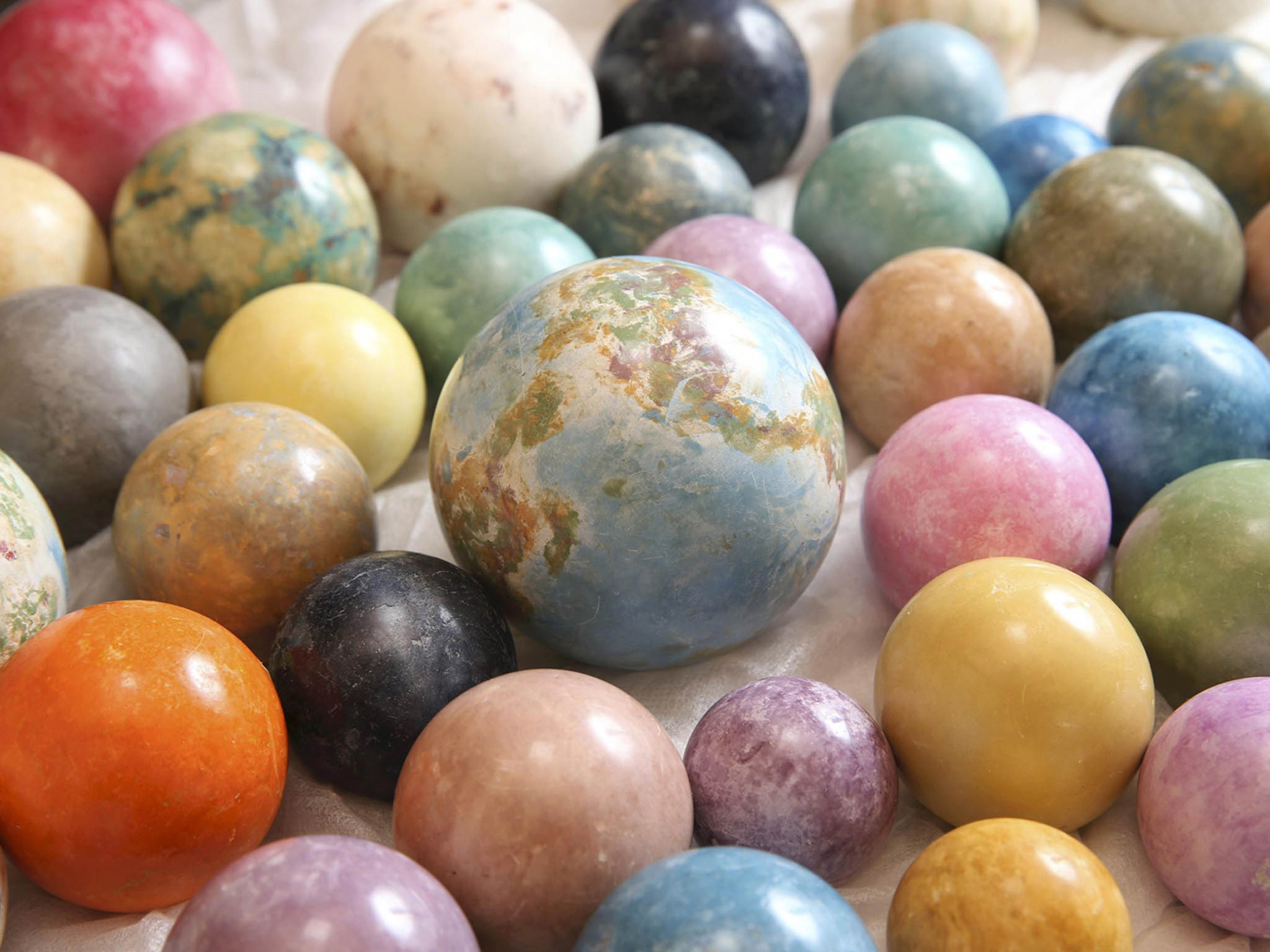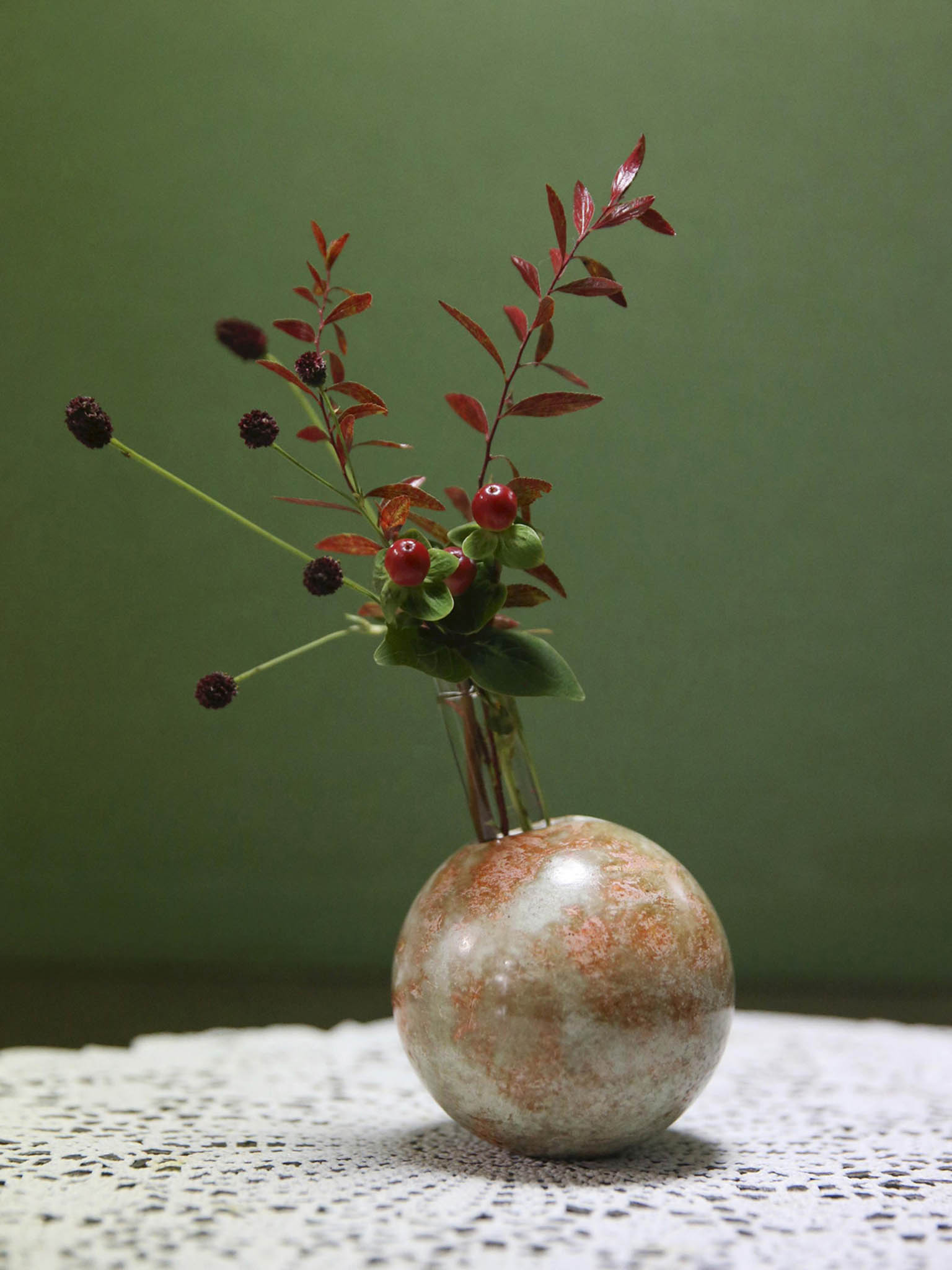Japanese mudballs prized for beauty, calming effect
Having the appearance of beautiful jewels, Tamotsu Saito finds how earthy materials can be theraputic to make

In many countries, mudballs are not considered elegant. But dorodango mudballs are beautiful and fun to make. The smooth balls are made by rolling a soil-based mix by hand.
Making dorodango can be very calming, but it is also difficult to make perfectly shaped balls as they are fragile and often crack. It can also be challenging to achieve the desired sheen.
Dorodango made by Kiyoko Miki have the appearance of beautiful jewels. They come in various sizes, and some maintain their earthy texture while others are intricately painted.
“I made improvements to the traditional dorodango-making method to give people more chances to feel the texture of soil,” said Miki, 62.
Since 2007, Miki has served as the head of a jury at an annual dorodango tournament in the city of Tokoname, Japan. Miki, from Yokohama, studied under plasterer Shinkichi Enomoto and makes soil paintings using mud and trowels instead of paint and brushes.

She organizes dorodango classes in which she teaches a traditional plastering technique used on earthen walls. The first step when making dorodango is to prepare the base material by mixing clay-based soil, straw and silica sand. “The mudballs won't get hard unless you use a clay-based soil,” Miki said.
Silica sand prevents the globes from cracking, while straw helps bind the soil and sand together, Miki said. Rolled mudballs are sun-dried for a couple of days and recoated with soil mix several times until their desired form is achieved. When the process is completed, the final shape should be a little larger than you plan as it is rubbed and polished later.
The key to perfect dorodango is to coat the balls with thin layers of soil mix – the same process used when plastering earthen walls. Rolling a large-sized ball from the beginning causes cracks, as the exterior dries quicker than the core. You don't have to make a perfect globe shape in the early stages. Miki uses a glass jar with an opening slightly smaller than the diameter of a dried rolled ball, allowing the dorodango to sit comfortably on the jar. The ball is rolled on the jar mouth, which lightly rubs the ball's surface until it rotates smoothly with no resistance.

“The dorodango obtains its spherical shape as the exterior is shaved on the edge of the jar mouth,” she said. Loose straw sticking out from the ball should be burned away by holding the ball with tongs over a stove. The ball should be coated further with a sand-based plaster, a material often used on white walls in Japanese castles.
Balls are colored using other types of soil, or paints. Colour pastes can be made by mixing paints with lime and white clay. Miki demonstrates by applying two coats of paste to a ball. It becomes whitish when it dries, but is not shiny yet.
Polishing for dramatic change
To polish the ball, Miki spreads olive oil over the ball's surface and pressed it on the opening of a small jar, rotating it softly at first and gradually applying pressure on the jar to bring out the shine. “The surface begins to shine as you polish it. It's amazing when you can eventually see your face reflecting on the ball's surface” she said.
Miki recommends polishing the finished balls regularly with a cloth to maintain the sheen. Clay-based soil is available at do-it-yourself stores, and hemp rope can be used in place of straw. “Use whatever you can find instead of buying all the materials at a store,” Miki said. “It's relaxing to touch round objects. You will probably get attached to dorodango that took days to make.”
A finished dorodango can be used as a vase for a single flower. They are suited to be gifts, too, Miki said. She drilled a hole in a dorodango ball and placed a test tube inside to hold the flowers. You should be careful not to crack the ball when using the drill. Make a stable base on the dorodango using a file. Try to choose a spot that will tilt the vase opening slightly to enhance the aesthetic appearance. “Dorodango flower vases in earthlike colors complement wild flowers,” Miki said.
Join our commenting forum
Join thought-provoking conversations, follow other Independent readers and see their replies
Comments